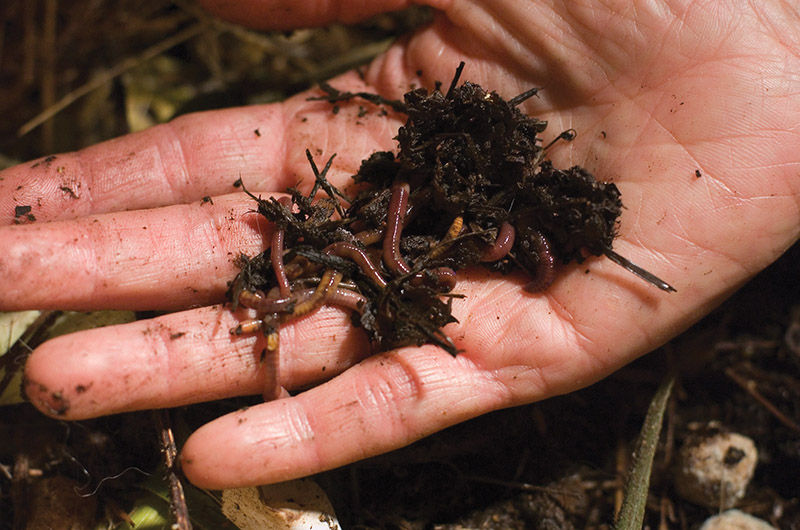Red Wigglers: The Secret to Eco-Friendly Composting
Red wigglers, clinically called Eisenia fetida, play a critical role in sustainable composting methods, supplying a natural solution to throw away monitoring. These worms not just take in natural products but likewise change them into valuable vermicompost, enriching dirt health and wellness and advertising ecological equilibrium. As urban locations face increasing waste challenges, recognizing the benefits and appropriate treatment of these microorganisms comes to be necessary for both gardeners and conservationists alike. What specific actions can people take to harness their potential successfully?
What Are Red Wigglers?
Although several people are acquainted with earthworms, red wigglers (Eisenia fetida) are a details types that play a crucial function in composting. Belonging to Europe, they have adjusted well to a variety of environments, specifically in disintegrating organic matter. Unlike usual yard worms, red wigglers thrive in rich, damp environments, making them excellent for composting systems.
(red worms)These worms are characterized by their reddish-brown coloration and elongated bodies, typically determining between 3 to 4 inches in size. Red wigglers are epigeic worms, indicating they live near the dirt surface and feed upon rotting organic material. Their high reproductive rate allows populaces to proliferate under ideal conditions, with the ability to increase in number every couple of months.
Red wigglers possess an unique gastrointestinal system that allows them to damage down organic waste efficiently. Their lasting nature makes red wigglers a beneficial property in eco-friendly composting techniques.
Benefits of Using Red Wigglers
Utilizing red wigglers in composting systems offers numerous advantages that improve both the performance of waste disintegration and the quality of the resulting garden compost. These earthworms, medically referred to as Eisenia fetida, are renowned for their phenomenal capability to take in organic waste, converting it right into nutrient-rich vermicompost at a remarkable rate. Their rapid digestion process increases the break down of cooking area scraps and backyard waste, dramatically minimizing the moment needed for composting.
Along with their performance, red wigglers add to enhanced dirt framework and fertility. The vermicast created by red wigglers is rich in essential nutrients, useful microbes, and humic acids, every one of which enhance dirt health and promote plant growth. This nutrient-dense compost aids maintain wetness and enhances aeration in the soil, promoting a prospering ecosystem for plants.
In addition, making use of red wigglers for composting lowers land fill waste, contributing to an extra sustainable waste administration system. By drawing away natural products from garbage dumps, composting with red wigglers decreases greenhouse gas emissions, making it an environment-friendly option for environmentally mindful people and neighborhoods. Overall, red wigglers provide a reliable and sustainable solution for composting.
Establishing Your Worm Bin
Developing a worm bin is a straightforward procedure that requires cautious factor to consider of materials and problems to ensure a growing setting for red wigglers. Begin by choosing an appropriate container, which can be a plastic bin or wood box, with an ability of a minimum of 10 gallons for reliable composting. Make sure the bin has sufficient air flow by drilling small holes in the lid and sides to allow air flow.
Next, prepare the bed linen, which is vital for keeping dampness and supplying a habitat for the worms. Appropriate materials include shredded newspaper, cardboard, coconut coir, or peat moss. Go for a bedding depth of about 4-6 inches, ensuring it perspires but not overly wet.
It is necessary to keep the right temperature level for your worm bin, preferably in between 55 ° F and 77 ° F(13 ° C and 25 ° C) Setting the bin in a shaded area to stop getting too hot. Furthermore, keep the bin far from direct sunshine and visit the site severe weather to shield the worms.
Feeding Your Red Wigglers
Feeding your red wigglers is a critical element of successful worm composting, as it straight impacts their health and wellness and the efficiency of your composting system. Red wigglers flourish on a well-balanced diet consisting mostly of organic waste products. Appropriate food options include vegetables and fruit scraps, coffee grounds, crushed eggshells, and shredded paper. Avoid feeding them meat, dairy products, and oily foods, as these can draw in parasites and create odors.
(red worms)Beginning with little amounts to allow the worms to eat the material completely prior to including much more. Display the food disintegration process and adjust the amount based on exactly how swiftly the worms are processing the waste.

Keeping Your Worm Compost System
A properly maintained worm garden compost system is crucial for optimizing the performance and longevity of your composting efforts. Normal monitoring of wetness degrees is vital, as red wigglers prosper in a wet environment, ideally around 70% humidity. If the bedding ends up being as well dry, gently mist it with water; conversely, if it ends up being excessively damp, include dry bedding such as shredded paper or cardboard to soak up excess dampness.
Temperature control is likewise essential. Red wigglers like temperature levels between 55 ° F and 77 ° F(13 ° C to 25 ° C) If temperatures surpass 85 ° F(29 ° C), the worms might come to be stressed out or pass away. Guarantee your garden compost system is maintained in a shaded, ventilated area to avoid getting too hot.
Check the worm populace and their activity; a flourishing population indicates a healthy atmosphere. By complying with these upkeep methods, you can guarantee an effective and lasting worm composting system that properly reuses organic waste.

Final Thought
In conclusion, red wigglers play an important function in green composting by efficiently transforming natural waste right into valuable vermicompost. Embracing the usage of red wigglers represents a functional approach to boosting ecological sustainability and fostering much healthier ecological communities.